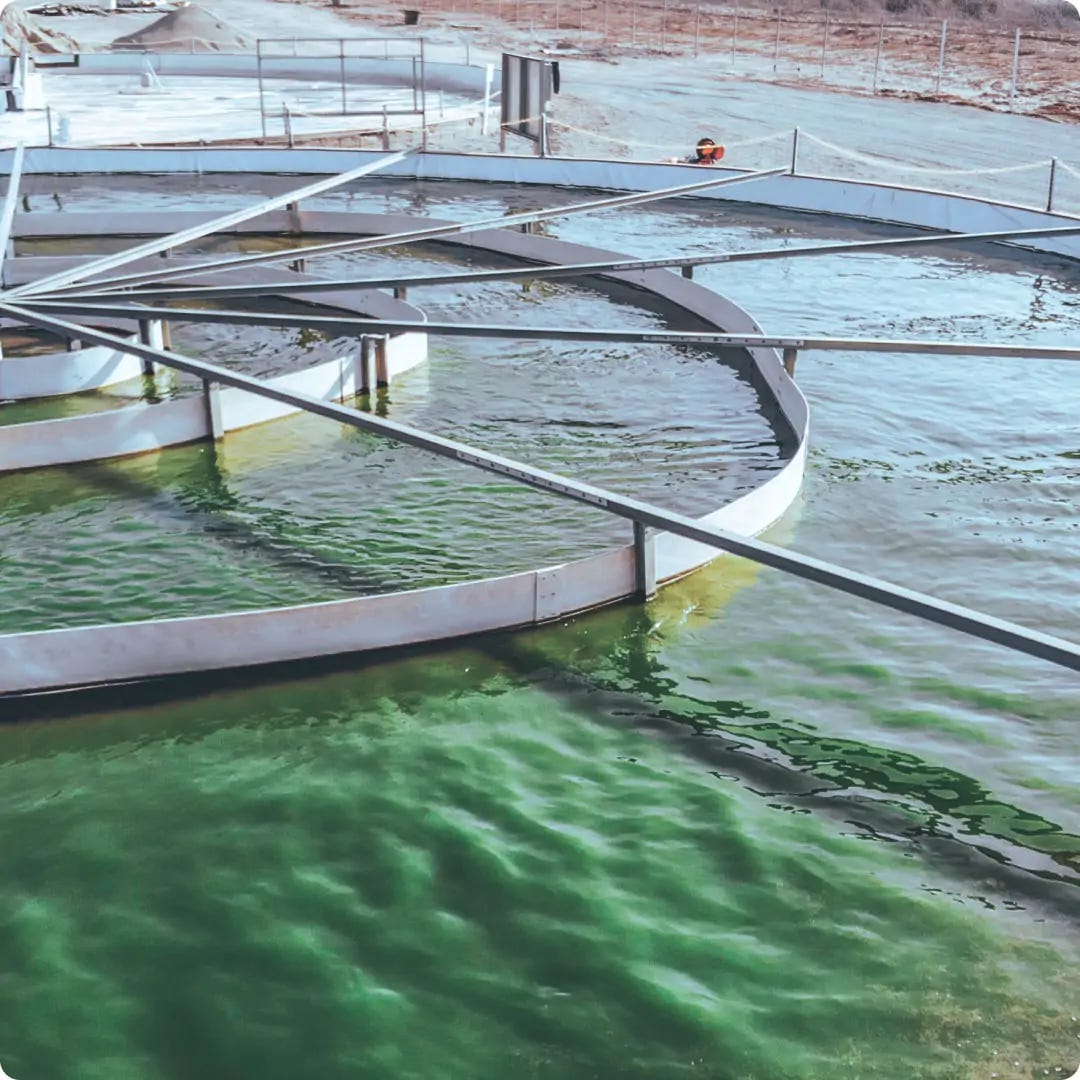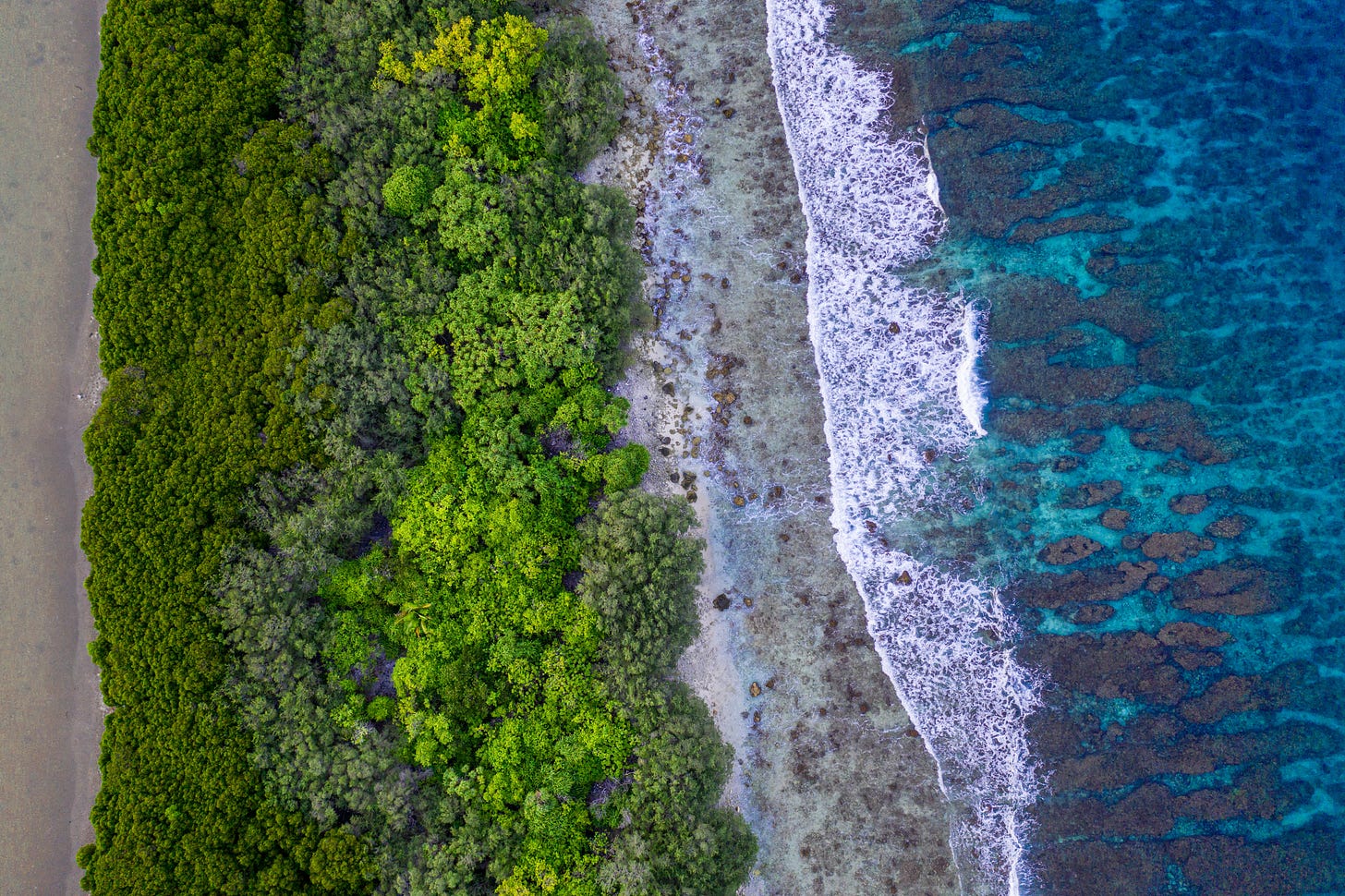Algae, the wonder "plant" that could help decarbonise aviation
A look at two companies gearing up to produce algae biofuels.
What you need to know
Biofuels company Viridos and new startup Greenlight want to turn algae into Sustainable Aviation Fuel (SAF), offering a CO2 reduction of 70%.
Algae is a wonder ‘plant’ that acre for acre delivers 200 times more oil than soybeans.
Unlike fuel crops, algae doesn’t compete with food crops for arable land use.
You can even use algae to make biodegradable plastic or to reduce methane from cow burps.
Algae development is highly expensive. Exxon Mobil controversially withdrew from the space last year, stopping funding to Viridos. It subsequently faced claims that the investment was a greenwashing exercise.
Viridos now has United Airlines and Bill Gates’s Breakthrough Ventures on board as investors.
Greenlight is at a much earlier stage of development. It is looking for funding for its first ‘proof of concept’ pilot plant and eventually hopes to develop algae for biofuels in the seas.
From making biofuels to reducing cow burps
US President Jimmy Carter was something of an alternative energy pioneer. In 1979, he placed an early bet on solar energy, putting 32 panels on the roof of the White House East Wing at a time when solar was at a very expensive $35 per watt.
Despite the Reagan administration subsequently taking the panels down, Carter proved to be right. Today, the IEA says it is the cheapest form of energy in history at less than $0.50 per watt.
But along with sunlight, Carter had his administration look into another energy source: algae. These plants live in both the sea and freshwater and range in size from microscopic single-celled organisms to large seaweeds that can grow up to 100 feet long. In fact, the 1978 Aquatic Species Programme was created to examine how algae could be used for renewable fuels for transportation.
Why algae?
“Why would you be doing anything else?”, says Dan Brown, founder of algae fuels startup Greenlight. “An acre of algae ponds or enclosures produces as much oil as 200 acres of soybeans.”
Algae has, in fact, been touted as something of a wonder ‘plant’ that could prove crucial in the fight against global warming. Not only can it be turned into a biofuel, it can also be used to make biodegradable plastic.
You can also sink it into the bottom of the ocean and use it as a highly effective form of carbon capture. You only need 1.2 kg of algae to equal the carbon capture capabilities of an entire forest.
Algae even offers one possible solution to agriculture’s climate change impact. Researchers have found that cows burp 82% less methane if you feed them the plant.
Exxon Mobil and greenwashing claims
“Algae doesn’t mess around”, says Greenlight’s Dan Brown. “They are the progenitors of all plants and trees that live now. Algae is immensely productive, a group of algae will double pretty much every day.”
So why aren’t we extracting the lipids — the fatty acids that can be used to make oil from Algae — at an industrial scale right now?
Unfortunately, it isn’t that simple.
Talking to the Guardian, former Viridos CTO Todd Peterson said that the company found that wild algae couldn’t produce the high levels of lipids needed to make large amounts of oil. So Viridos has been trying to genetically engineer a suitable algae strain.
The most established player in the algae fuels space, Viridos was established in 2005. It believes that the alternative fuel it is trying to develop could result in a CO2 emissions reduction of 70%.
In 2009, it received a boost when Exxon Mobil announced that it would put $600 million worth of funding into helping Viridos develop the technology.

Peterson told the Guardian that even though “it’s hard to engineer an organism that is hundreds of millions of years old to behave differently”, Viridos was making real progress.
In December 2022, however, Exxon Mobil withdrew from the space without explanation, having only spent $350 million of that original $600 million.
Several critics questioned whether the oil giant was really serious in the first place, noting that Exxon Mobil had for a number of years been leading with algae in its marketing activity as a way of polishing its ‘green’ credentials.
Writing in ‘ExxonKnews’, Emily Saunders from the Centre for Climate Integrity claims that the whole exercise was “nothing more than a well-funded, long-form greenwashing attempt to get us off their backs.”
In fact, researchers say that algae needs several billion dollars worth of investment and a long-term commitment to make it work as a biofuel.
Here, it's worth pointing out that Exxon Mobil posted record profits of $56 billion in 2022 — a historic high for the Western oil industry. So it certainly has the financial muscle to fully fund an area like algae development, if it wants to.
However, as International Council for Clean Transportation (ICCT) Program Director Dan Rutherford points out, “expect Big Oil to build moats around three markets — plastics, marine fuels, and jet fuel. None of those will be ceded willingly.”
Each of those three areas could, with enough investment, be disrupted by algae.
A vote of confidence from Bill Gates’s climate fund
Although Virdos had to let 60% of staff go when Exxon Mobil withdrew funding, the programme got a new lease of life when Bill Gates’ Breakthrough Energy Ventures led a $25 million investment round, which also included United Airlines and another oil giant, Chevron.
Breakthrough Energy only invests in a company when it believes that it can really move the needle on global warming.
In particular, investments need to have “the potential to reduce at least half a gigaton of greenhouse gases every year, about 1% of projected 2050 global emissions.” It also has its own experts assessing whether the technology in question can scale.
As a result, this is a significant vote of confidence from one of the world’s most high-profile climate tech funds.
With Breakthrough and United on board, CEO Oliver Fetzer now believes the company is two years away from coming up with a commercially viable product.
Greenlight wants to make biofuel in the sea
Seattle-based Greenlight is a brand new entrant in this space. Founder Dan Brown was an aerospace engineer in his native UK, India and the USA, where he now lives.
Brown points to several differences between his proposed approach and that of Viridos.
First of all, there’s less of an emphasis on genetic engineering. “We’ll be looking to use local algae variants rather than genetic modifications.”
Brown mentions that research shows that there are anywhere between 30,000 to one million different species of algae – the huge variation in that number indicates how much more we still have to learn about it.
And while Viridos has its test facility on non-arable land where the algae sits in seawater tanks, Greenlight intends to have its algae farms in the sea.
“Why can't we grow marine algae in the sea?”, says Brown. “It doesn’t use up any land, it doesn’t use any freshwater, it’s more ideally suited temperature wise, and when it comes to the carbon dioxide levels, the seas have already sorted that out for us.”
Greenlight is at a very early stage and has put in patents for its technology. At the same time, the copmany is running lab tests to prove that algae biofuels will be more productive if produced in the sea than from an open pond on land.
The next step will be to have a series of algae enclosures, probably off the coast of Florida, that will produce 100 barrels of biofuel a day. That’s a tiny amount, but the idea is to do this as a proof of concept.
That will then grow into the company’s first commercial facility, “let’s call it bio-rig one”, says Brown. “And there are lots of other great places in the world where we can do this, all in tropical seas.”
“India, Indonesia, Malaysia, off the coast of Africa, again, off the coast of South America as well. And the Caribbean. These are places where you can have an installation set up. The Seychelles alone could replace 20% of world oil production in the seas that they have, which are absolutely perfect for doing what we do.”
Getting from lab tests to that stage is a big task, and Brown realises that “it’s not going to happen overnight. It’s going to take years to do.”
He even compares it to the advent of farming thousands of years ago.
“The way I look at it is that it’s similar to around 5000 years ago when people first started farming. And they realised that the seeds of sun grasses, they could turn them into flour and bread and all the rest of it. So they found the local grasses that performed the best and they grew them preferentially. We’ll be looking into the same sort of thing.”
Our take: the potential is there; we need the investment
Algae has a lot of advocates who have been talking up the potential of this wonder plant for decades.
The recent involvement of Breakthrough Energy is significant as the fund no longer takes speculative punts in a company or technology. It needs to have a reasonable degree of confidence that it will work and can scale.
From cow methane to biofuels, there are lots of use cases where it could make a difference. But it’s going to take a great deal of investment for us to get there — from creating or identifying the right strain to then commercialising it.
As with so many other promising technologies, the key sticking point isn’t the potential — it’s the funding needed to realise it.
With their record-breaking profits, the oil giants could step up and invest the billions of dollars the sector needs. The question is, do they want to?
(Note, Algae strictly speaking aren’t plants but are plant like, being classified as ‘protists’, we’ve used the term as short-hand)






